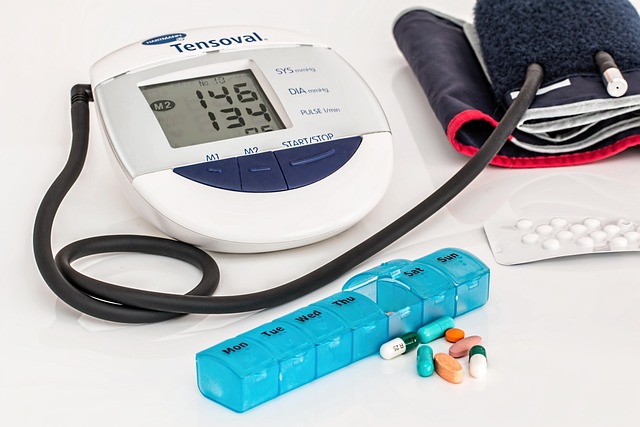ED Treatment
Erectile dysfunction is common and treatable, with options ranging from lifestyle changes and counseling to medications and devices. Understanding causes, evaluation steps, and safe therapies can help you discuss personalized choices with a clinician and navigate local services in your area with confidence.

Erectile dysfunction (ED) is a common issue that can affect sexual health, relationships, and overall well-being. While many people focus on quick fixes, effective care starts with understanding the causes and matching them to safe, evidence-based solutions. ED often has more than one contributor—circulation, nerves, hormones, medications, and mental health can all play a role—so a thorough assessment is the foundation of good outcomes.
This article is for informational purposes only and should not be considered medical advice. Please consult a qualified healthcare professional for personalized guidance and treatment.
ED Treatment: what it involves
A structured approach to ED Treatment begins with an evaluation of medical history and risk factors. Clinicians typically ask about the onset and pattern of symptoms, morning erections, libido, urinary symptoms, and current medications. Conditions such as high blood pressure, diabetes, obesity, high cholesterol, and sleep apnea are frequently associated with ED because they affect blood vessels and nerves. A physical exam may include blood pressure, cardiovascular and neurological checks, and a focused genital assessment.
Basic lab tests can support the evaluation, such as fasting glucose or A1C for diabetes, lipid profile for cholesterol, and morning total testosterone if symptoms suggest low testosterone. When indicated, additional testing (e.g., penile Doppler ultrasound) may help clarify blood flow or structural factors. The goal is to uncover treatable causes and choose therapies that are safe for your health profile.
Erectile Dysfunction Treatment options
Erectile Dysfunction Treatment spans lifestyle, psychological, medical, and procedural interventions. Many people benefit from a combination:
- Lifestyle measures: Regular exercise, weight management, balanced diet, adequate sleep, limiting alcohol, and stopping smoking can improve vascular health and erectile function. Managing stress and treating sleep apnea also help.
- Psychological support: Performance anxiety, depression, and relationship stress can perpetuate ED. Cognitive behavioral therapy, sex therapy, or couples counseling can reduce anxiety and improve intimacy.
- Oral medications: PDE5 inhibitors—such as sildenafil, tadalafil, vardenafil, and avanafil—enhance blood flow in response to sexual stimulation. They differ in onset and duration; some are taken as needed, others daily. Common side effects include headache, flushing, nasal congestion, and indigestion. These drugs must not be combined with nitrates and require medical review for heart disease.
When pills are not suitable or effective, other Erectile Dysfunction Treatment paths include:
- Vacuum erection devices (VEDs): A cylinder and pump draw blood into the penis, and a constriction ring helps maintain the erection. VEDs are non-invasive and can be used alongside other therapies. Some men report temporary bruising or discomfort.
- Intraurethral or injectable medications: Alprostadil (alone or in combination formulations) can be placed in the urethra or injected into the penis to trigger an erection. Proper instruction minimizes side effects such as pain or prolonged erection.
- Hormone therapy: If tests confirm symptomatic low testosterone and no contraindications exist, testosterone replacement may improve libido and, indirectly, erectile function. Monitoring is essential to manage risks.
- Surgical options: Penile implants (inflatable or malleable) are considered when conservative options fail or are unacceptable. Satisfaction rates can be high among appropriate candidates, but surgery carries risks and requires specialist evaluation.
Some emerging modalities, such as low-intensity shockwave therapy for vasculogenic ED, show mixed evidence and remain under evaluation in many regions. Discuss availability and research status with a clinician before pursuing procedures that may not be standardized in your area.
Treatment for ED: diagnosis, safety, and follow-up
Treatment for ED should always consider cardiovascular safety. Because penile arteries are smaller than coronary arteries, ED can sometimes precede symptoms of heart disease. Sudden or worsening ED warrants a review of blood pressure, cholesterol, blood sugar, and lifestyle. Seek urgent medical attention for chest pain, severe shortness of breath, or neurologic symptoms. Before starting medication for ED, clinicians assess whether sexual activity is safe for your heart.
Medication interactions and underlying conditions matter. PDE5 inhibitors can interact with nitrates (used for chest pain) and certain alpha-blockers. Individuals with significant liver or kidney disease, retinitis pigmentosa, or a history of priapism may require tailored choices or avoid specific treatments. If you experience visual or hearing changes, severe dizziness, or an erection lasting more than four hours, contact a clinician promptly.
Beyond medications and devices, addressing contributing factors sustains improvements. Managing diabetes and blood pressure, treating depression, reviewing medications that may impair erections (such as some antidepressants), and building intimacy skills with a partner can make a measurable difference. Access to local services—in-person clinics, mental health professionals, and pharmacies in your area—supports continuity of care and safe follow-up. Remote consultations may be suitable for discussion and monitoring, while physical exams and procedures occur in clinical settings.
Conclusion
ED is common and treatable, and most people improve with a personalized plan that targets medical, psychological, and lifestyle factors. A careful evaluation guides safe choices among pills, devices, counseling, and procedures. Coordinated follow-up and attention to overall health, including cardiovascular risk reduction, help restore function and confidence over time.




